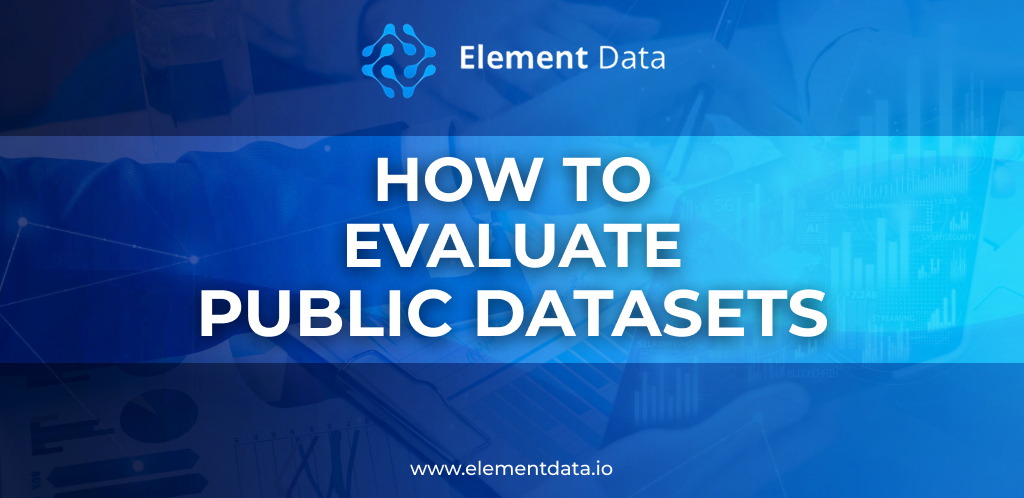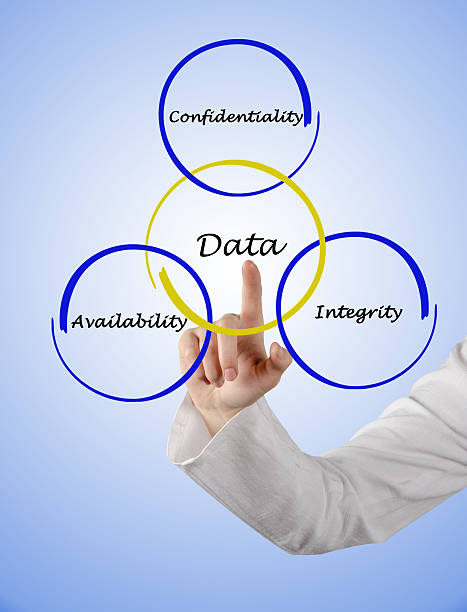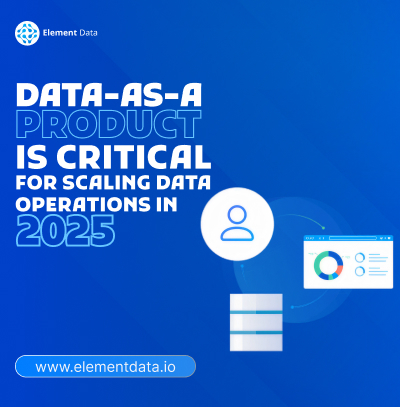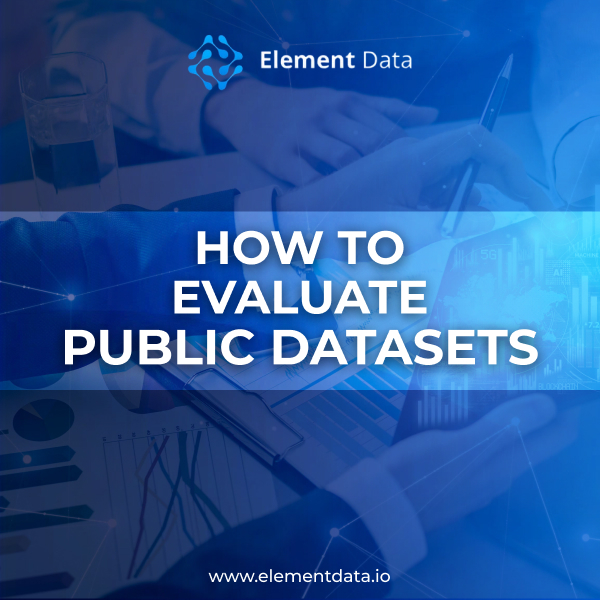How to Evaluate Public Datasets

Data is everywhere, but not all of it can be trusted. Every day, businesses and researchers leverage open datasets to inform AI models, reports, and decisions. Many public datasets have missing context, inconsistent formats, or poor documentation that can skew results and bias algorithms. The World Economic Forum estimates that by the end of 2025, 463 exabytes of data will be generated globally every day. That’s why it’s not enough to just find data; you need to know how to vet it. Following best practices for evaluating public datasets isn’t optional anymore; it’s the difference between reliable insights and decisions built on shaky ground.

Without a structured process, you risk flawed analysis, poor decisions, and ethical pitfalls. In this guide, we’ll show you how to assess dataset quality for analysis and introduce practical validation techniques you can apply immediately.
Let’s explore how to evaluate public datasets like a pro.
What Is A Dataset?
A dataset is a series of data saved in a database. It is typically presented in a table format, with rows and columns. Every column represents one variable, and every row represents a value. Many data sets are not tabular (structured in rows and columns) or unstructured (not structured or semi-structured) data.
What Is Data Evaluation?
Organisations need to understand this before establishing how and why to use it. In general, data assessment involves analyzing the context of the information and the formats and sources through which it is presented to be suitable, reliable, and relevant to help businesses meet their objectives. It’s also critical to adhere to best practices for evaluating public datasets to guarantee data is credible and relevant.
The Growing Demand for Public Datasets in Modern Data Projects
In the past decade, public datasets have driven some of the world’s largest data initiatives. They help train AI models, shape public health policy, and support business intelligence. The demand for open, high-quality data has never been higher. The need for open, quality data has never been greater. The impact of dataset documentation on usability may be one factor. Well-documented data is easier to understand, more reliable, and more accessible. Why the surge in demand? A few reasons stand out:
- AI and machine learning models require large, diverse, and representative data to perform reliably, and public data often fills critical gaps in proprietary datasets.
Awesome public datasets support transparency and reproducibility in research and applied data science, particularly for academic studies, social impact projects, and policy modeling.

The catch, though, is that this increasing reliance has also made it more crucial than ever to vet these datasets thoroughly. As usage rises, so does the risk of incorporating unreliable or poorly structured data into critical decision-making processes. This is where knowing how to assess dataset quality for analysis, from being complete and consistent to its licensing and metadata quality, is invaluable.
Dimensions for Evaluating Data Sources
When you come across awesome public datasets, you should examine their source and then run some basic sanity checks to ensure it is reliable.
To perform that evaluation quickly, consider that data and its origin along five dimensions: Verifiability (can this data be confirmed?), internal consistency (is the data consistent within itself?), recency (how recent is the data?), ambiguity (is the data understandable and clear?), and reputation (what is the track record of the source?).
To make it easy for you to remember these five dimensions, you can use the acronym VIRAR. That’s Portuguese for spinning, or revolving. Now you know if you didn’t before!
Key Risks of Using Unvalidated Public Datasets
Public datasets are accessible and free, but that doesn’t mean they’ll necessarily be trustworthy. Leveraging unvalidated open datasets in your analysis or AI workflows without proper checks is one of the quickest ways to introduce bias, errors, and business risk to your project.
Here’s why it matters.
- Data Bias and Skewed Insights
Public databases are commonly plagued by sampling bias, a lack of representation of minorities, or outdated information. If it goes unchecked, it may result in biased predictions in machine learning, drive partial decision-making, and generate incorrect analysis.
- Missing, Incomplete, or Inconsistent Data
Many open datasets are incomplete or suffer from incompatibilities in field names, data types, and units of measurement. Without a structured review, they lead to model errors, broken dashboards, or bad reporting. This demonstrates the importance of efficiently assessing the quality of available data for reliable operations.
- Outdated or Irrelevant Information
Public datasets aren’t always regularly updated. Using outdated data can cause poor decisions or inaccurate forecasts. This is risky in fast-changing sectors like healthcare, finance, or climate analytics. One of the best practices for evaluating public datasets is to check the metadata and version history. It helps you avoid relying on obsolete information.
- Ethical and Legal Risks
A lot of the data may be sensitive, personal, or collected in a non-consensual manner. Without proper validation of data sources for privacy and licensing compliance, organizations face serious risks. They could be exposed to heavy regulatory fines under GDPR, HIPAA, or local data protection laws. Which is why evaluating the reliability of public datasets and verifying ethical use standards is a crucial part of modern data workflows.
- Lack of Metadata and Documentation
A dataset with no metadata is like a book with no title or table of contents: It’s hard to understand, and dangerous to reuse. Without proper documentation, it is not possible to know how the data was gathered, what a given variable means, or where there are potential limitations. This can lead to wrong interpretations during the analysis process. The role of metadata in the evaluation of datasets is invaluable to ensure transparency, context, and sound decision-making.
Key Criteria for Selecting Reliable Open Data Sources
With thousands of public data portals out there, downloading the first dataset that suits your interest is simply not enough. To protect the integrity of your analysis and models, you need a clear framework for choosing trusted sources.

The following criteria for selecting open data sources for any data professional to select open data sources:
- Source Credibility: Give preference to the data released by governmental portals, global organizations, established universities, or reputed research laboratories. Avoid unknown or poorly vetted repositories.
- Metadata Availability: Ensure the dataset includes metadata detailing its source, collection methods, and limitations. The importance of metadata in dataset evaluation lies in its role in validating and accurately interpreting data.
- Recency and Update History: In high turnover and rapidly changing industries like healthcare or finance, decision-related predictions based on outdated information can lead to flawed predictions and risky decisions. The reason is that trusted sources keep version logs and clear timestamps.
- Data Completeness and Consistency: Check that the data are complete, and data formats are consistent, and there is a minimal number of missing values in the dataset. Quality status is indicated on some platforms; use the labels first, and where there is uncertainty, do your own tests.
- Documentation Quality: Awesome public datasets are packaged with a detailed document or data dictionary. That file should define every variable, measurement units, list collection dates, and point out any known quirks or errors.
How to Assess Dataset Quality for Analysis: 8 Practical Steps
So when you have the origin of a specific set of data on a trusted platform, the second most crucial thing is to analyze its technical quality, and then you can begin to expect applying it to your project. By implementing steps to analyze public datasets effectively, you can use the data with confidence. This is a practical procedure that all data professionals must adopt when evaluating the quality of approving a dataset to be used in analyses:
- Review Metadata Thoroughly
Start by examining the dataset’s metadata. This should include information about:
- The data’s source and creator
- Collection methodology
- Field definitions and data types
- Date of publication and last update
- Licensing and usage terms
If metadata is missing or incomplete, it’s a warning sign that the dataset may not be reliable.
- Check Data Completeness
Look for missing values, empty records, or incomplete columns. Determine:
- The percentage of missing data per field
- Critical fields with null values
- Whether any records are partially populated
Incomplete data can skew analysis, so identify gaps early.
- Verify Data Consistency
Ensure the dataset follows consistent rules for:
- Field naming conventions
- Data types (e.g., date, text, integer, boolean)
- Units of measurement
- Standardized formats (e.g., consistent date formats, currency labels)
Inconsistent formatting leads to processing errors and unreliable analysis results.
- Analyze Value Ranges and Data Distributions
Check for outliers, impossible values, or unreasonable ranges. Validate:
- Min/max thresholds for numeric fields
- Valid categories for categorical data
- Logical data distributions using histograms or box plots
This step helps detect data entry errors and anomalies.
- Test for Duplicates and Redundancies
Make sure that duplicate records or redundant fields are identified because they can increase sample size and impact the result of the analysis. You can use effective tools for dataset quality assessment, so the problems can be identified and fixed as fast as possible.
- Great Expectations: Data validation and testing tool.
- Deequ: Data quality checks for big data.
- Datafold: Detects anomalies and schema changes.
- Understand Sampling Methods and Data Representativeness
Evaluate whether the information was gathered using fair and random sampling or whether it is biased. Check:
- The size of the dataset relative to the population
- Sampling techniques used (if documented)
- Potential demographic, geographic, or temporal biases
There is the possibility of misleading AI models and reports based on biased samples.
- Assess Ethical and Privacy Risks
The sensitive data should be checked to see whether there is any identifying information, medical records, or GPS data. Ensure that it complies with any privacy legislation, such as GDPR or HIPAA, when such exists. When there are privacy risks, data should be anonymised or masked before usage.
- Run a Trial Analysis or Data Profiling Report
Before integrating the dataset into production models or dashboards:
- Run exploratory data analysis (EDA)
- Generate data profiling reports using tools like Pandas Profiling or Great Expectations.
- Look for distribution issues, anomalies, or patterns worth addressing.
This final step validates the dataset’s readiness for practical use.
Pro Tip:
For every step, document your findings and track any problems and assumptions. This enhances transparency and facilitates reproducibility in future projects.
Building a Professional Public Dataset Evaluation Checklist
When you are working with open data, having well-structured steps is crucial (it prevents the error that leads you to rework from a square one). It also prevents costly errors and, in some cases, protects the projects from bad data sneaking in unnoticed. A properly designed public dataset evaluation checklist ensures that all data you handle should comply with certain minimal criteria– e.g., quality, compliance, usability – before it is even exposed to your analysis pipeline.

Here is a professional-grade checklist that you can use or modify for your organization.
Public Dataset Evaluation Checklist
- Confirm Source Credibility
Is the dataset published by a reputable source (government, international body, university, or verified platform)?
- Check Licensing and Usage Rights
Does the dataset come with an open, clearly stated license (e.g., CC0, ODC-BY)? Are there any restrictions on commercial or derivative use?
- Review Metadata Thoroughly
Is there detailed metadata covering the dataset’s source, collection methods, field descriptions, update history, and limitations?
(Hint: No metadata = red flag.)
- Verify Last Update and Recency
When was this dataset last updated? Is that recent enough for the analysis you intend to make, particularly in a time-sensitive area like finance or public health?
- Examine Value Ranges and Detect Anomalies
Are numeric fields within logical thresholds? Are there any outliers, duplicate entries, or improbable values?
- Review Sampling Methods and Representativeness
Is the dataset sufficiently representative of the population or scope it claims to cover? Are sampling techniques fair and unbiased?
- Evaluate Documentation Quality
Does the dataset include a clear data dictionary or codebook explaining variable meanings, classifications, and assumptions?
- Validate with Profiling Tools and EDA Reports
Have you run an exploratory analysis or data profiling report to flag data quality issues before full-scale use?
Better Data Starts with Better Evaluation
For today’s world, where data powers everything from AI models to business predictions, the ability to work with reliable, high-quality public datasets isn’t a luxury — it’s a requirement. Ignoring validation exposes your projects to risk for flawed insight, biased outcomes, and serious compliance failures. As data professionals, it’s on us to follow best practices for evaluating public datasets so we can avoid the risks of bias, bad assumptions, and unreliable models.
If you are committed to improving the quality, reliability, and compliance of your data, be sure to finally upgrade your evaluation process and let us, Element Data, move with you. Our team is an expert in data quality evaluation, public dataset validation, and ethical data governance frameworks for AI, analytics, and research teams.
Ready to strengthen your data integrity? Partner with Element Data today. Let’s build smarter, bias-free data solutions together.




